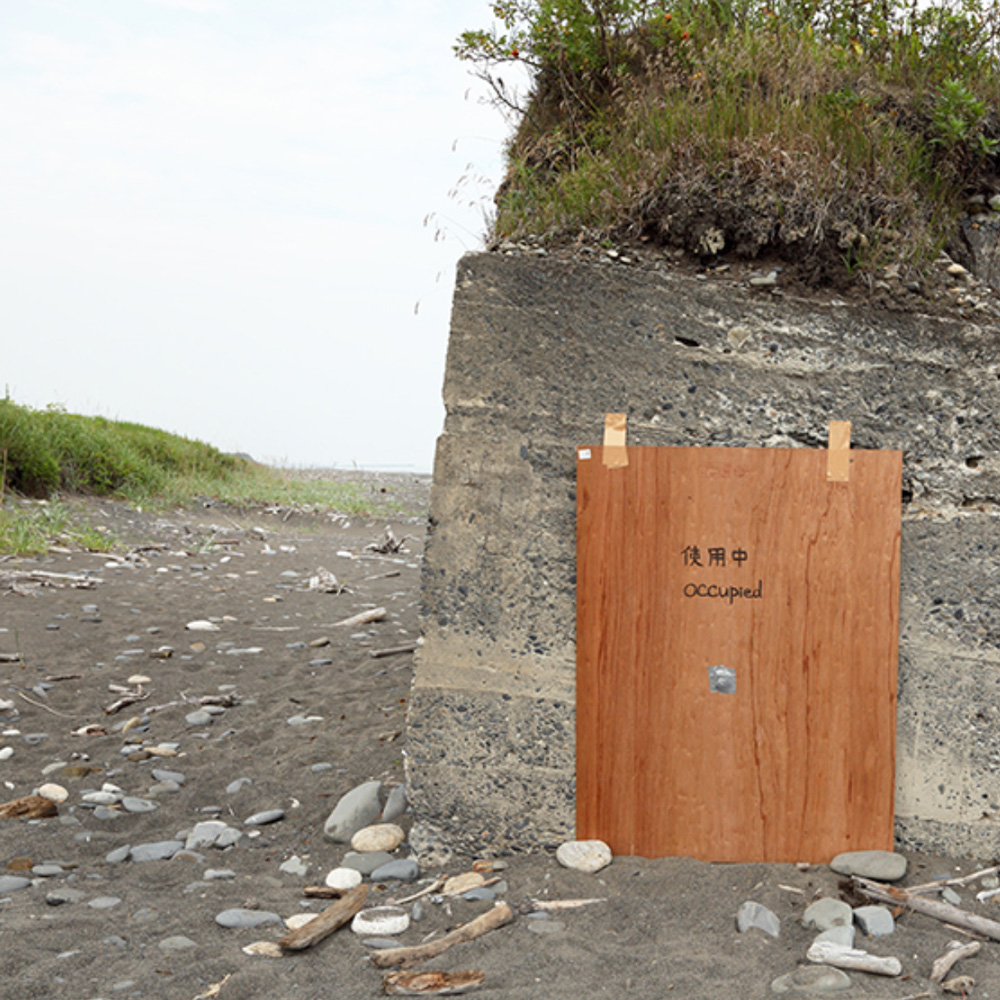2004 –
①戦後、放置された砲台の廃墟を探す
②新しい使い方を話し合う(新しい機能を与える、その方法)
③実際にいろいろな人と使ってみる
④元あった状況へ戻す
国内で放置され廃墟化した戦争の遺構/砲台を再利用するプロジェクト。戦争の遺構の現状 “ 調査” であったシリーズ「戦争のかたち」(2001-2005)の制作中、次々と遺構が壊されていく一方で、残される遺構は周辺を公園にしたモニュメントとなるケースが多く見られた。
こういった状況を知り、過去を残し学ぶ方法が画一化しているのでは?という疑問が生まれた。そして、 写真で記録するだけではなく、残されたモノたちを実際に触れてみるきっかけとして、「意図的に廃墟を再利用しよう」と考えた。
Re-FortとはRe= 再利用(renovate)、Fort= 砲台要塞の造語。毎回、様々なメンバー(美術家、建築家、写真家、ミュージシャンなど)と協働して行っている。
(1) Researching fort remains that were abandoned after 1945
(2) Discussing new uses for the remains (considering new functions)
(3) Actually using them with various people
(4) Returning the remains to their former state

・・・・・・・・・・・・・・・・・・・・・・・・・・・・・・・・
Re-Fort Project 7
ー海を眺める方法Ⅱー
2015.7.30
トーチカ(北海道大樹町)
メンバー:服部浩之
Re-Fort Project 7
— How to Look at the Sea II —
2015.7.30
Bunkers, Taiki Town, Hokkaido
Member: Hattori Hiroyuki
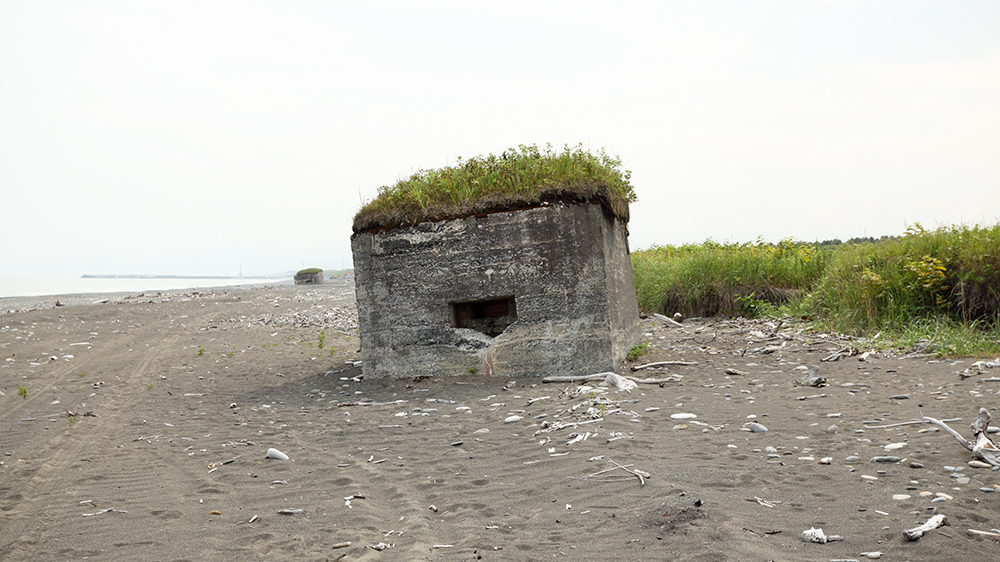
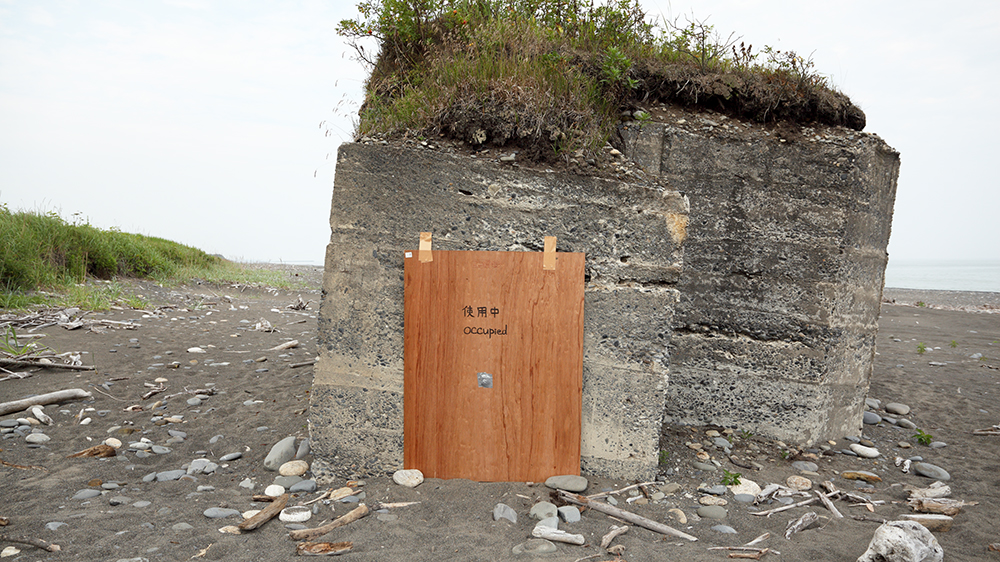
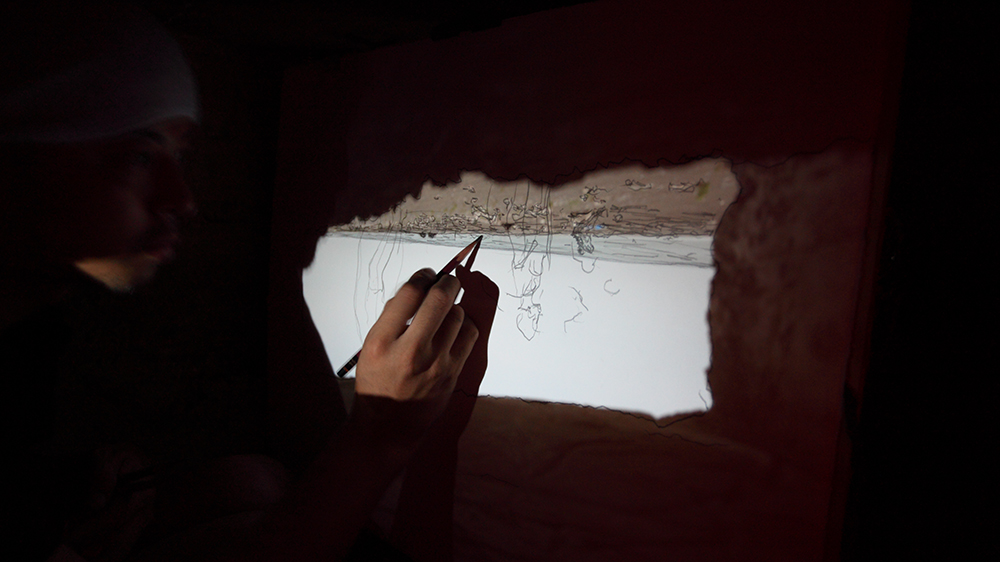
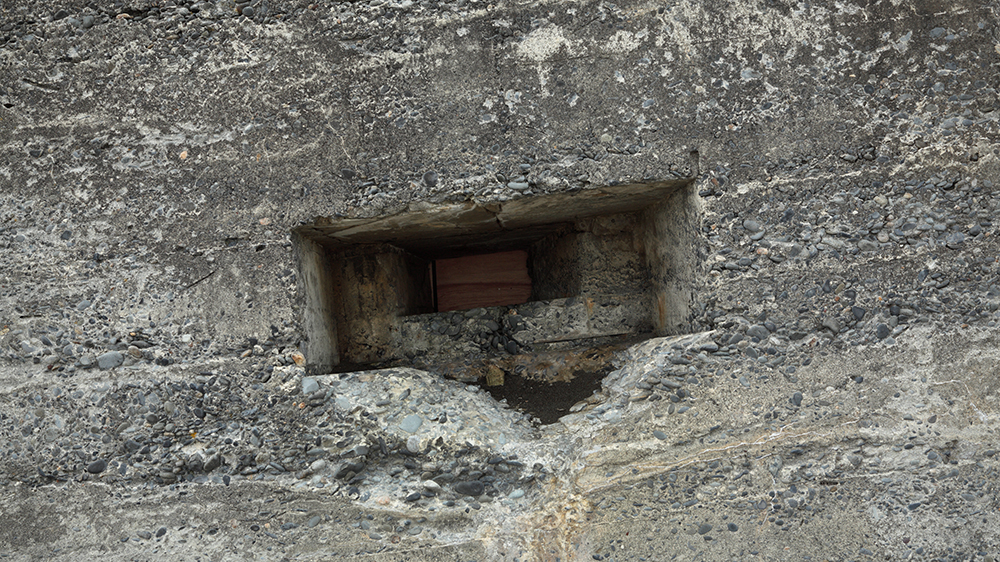
かつて敵の上陸に備えて作られたトーチカは、今現在も海を眺め続けている。僕らは、小さな四角い箱状の
その廃墟の入り口と銃眼を板で塞ぎ、銃眼にピンホールを開けた。真っ暗なトーチカの中に反転した海の風景が 映し出され、それをスケッチした。トーチカを「カメラオブスクラ※」にして、銃眼から見える今の風景を写し取るプロジェクト。
※ camera obscuraは、ラテン語で〈暗い部屋〉の意味。暗い部屋で、小さな穴を通して壁に外の景色が映し出される現象は古くから知られていた。現在のカメラの原型といえる暗箱型のカメラオブスクラは、
17世紀以降に遠近法による絵を描くための“ 道具”として普及した。
This bunker, built in preparation for enemy landings, continues to look out over the sea to this day. We boarded up the entrance to the box-shaped ruins and covered the embrasures, allowing only the smallest amount of light in through a tiny pinhole, which projected an inverted seascape onto the walls of the pitch-black bunker. This project used the bunker as a camera obscura* to capture the current landscape as seen through the eyes of the embrasure.
* Camera obscura translates to “dark chamber” in Latin. This phenomenon is nothing new. It has long been known that the scenery outside can be projected on to the wall of a dark room through a small hole. The camera obscura, which is sometimes considered a prototype for the modern camera, became popular as a tool for tracing images and achieving proper perspective in the 17th century onward.
・・・・・・・・・・・・・・・・・・・・・・・・・・・・・・・・
Re-Fort Project 6
̶—海を眺める方法̶—
2014
東京湾要塞劔崎砲台跡(神奈川県三浦市)竜飛崎海軍望楼跡(青森県東津軽郡)
メンバー:秋山幸、多田友充、服部浩之
Re-Fort Project 6
— How to Look at the Sea —
2014
Tokyo Bay Fortress Tsurugizaki Fort, Miura City, Kanagawa Tappisaki Navy Lookover, Higashitsugaru
District, Aomori
Members: Akiyama Miyuki, Tada Tomomitsu, Hattori Hiroyuki
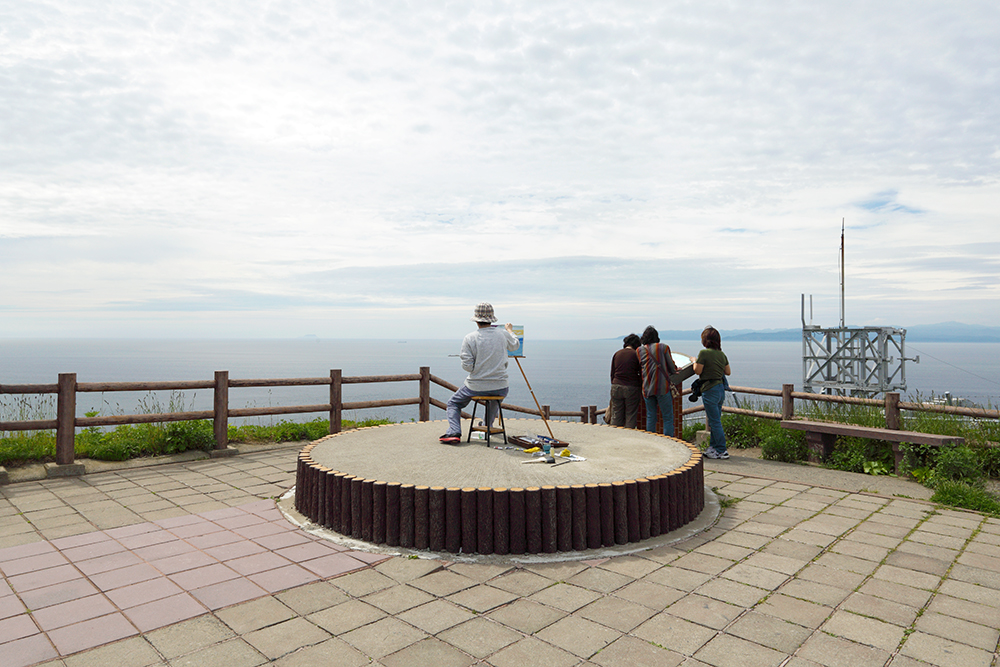
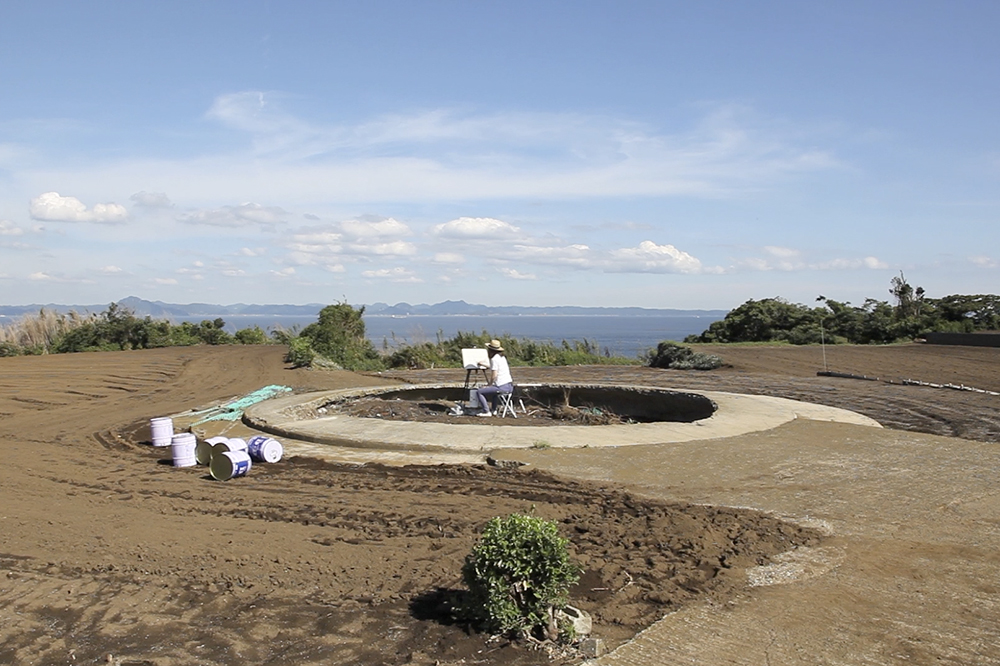
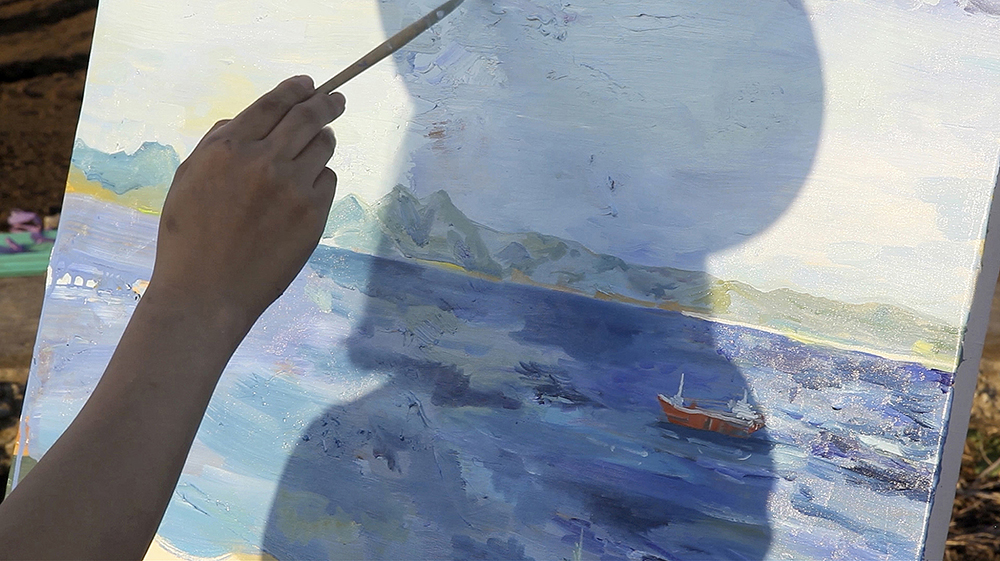
明治時代以降、重要な海峡や湾の入り口には外国船の侵入を防ぐために、たくさんの巨大な砲台が作られた。しかし、時代は船から飛行機へと変化し、砲台は無用の長物と化したまま終戦を迎えた。今では、金属製の大砲などは残されておらず、大地にただ円形のコンクリートの跡が残っているのみだ。その跡の上に、画家の手で海の絵を描いてもらい、そこから見える眺めを記録する。
Since the Meiji era, many huge batteries have been built at the mouth of important straits and bays to prevent foreign ships from entering. However, as military tactics shifted from sea to air, the war rendered these gun turrets useless. Nowadays, there are no cannons left, and only circular mounds of concrete remain. In this project, an artist sat on the mound to paint and record the view of the sea from there.
その先の眺め
皆既日食で薄暗くなった白昼の空に花火を打ち上げ、その風景を眺め、響き渡る音に聴き入ったのは2009年の夏だった。花火は北九州市和布刈(めかり)公園の高台にある砲台跡地から打ち上げられ、我々は関門海峡を挟んだ下関側の戦争遺構跡がある火の山公園の展望台で、ビデオカメラを手にその様子を眺めていた。震災が起こる以前だったが、少し不吉な暗さをもつ空に美しい花火が散る様を眺めるのは、かつてあった、そしてこれからも世界のどこかで起こるかもしれない戦争について想いを巡らせ、日常生活が何らかの要因で突然途絶えてしまう可能性があることを意識するには充分な経験だった。下道基行を中心に僕も含め5人のメンバーが主催した《Re-Fort PROJECT 5─太陽が隠れるとき、僕らの花火が打ちあがる》の概要を書き出すとこんなところだろう。あれから既に5年が経過していた。
戦後放置された軍事施設の廃墟を探し出し、その新しい使い方を話し合い考え、そして実際になんらかの方法で使ってみて、また何事もなかったように元の状態に戻す、というのがRe-Fortの一連の流れだ。
日本の海岸線には、戦争のためにつくられた建築が役目を終え、姿を変えつつもまだ多数残存している。これらの建築の多くは実際に戦闘で使用されたことはほとんどなく、外敵の侵入を防ぐための監視の場、あるいは抑止力として機能していた。外敵を見張るために遠くまで眺められる必要がある軍事施設は、常に見晴らしのよい場所に設置された。この戦争建築がそもそも本質的に備える特性に着目したのが、《Re-Fort PROJECT 6─海を眺める方法》だ。兵士に替わって画家が、武器を絵筆に持ち替え、海を眺めその先にみえる風景を描く。絵画は風景を記録する方法として重要なメディアである。
この作品では、鋭い観察眼を持って風景を眺め独自に解釈して出力する専門家としての画家が風景を描く様子を、さらにその後ろから私たち鑑賞者が眺める構造となっている。兵士たちは海の先に存在するかもしれない外敵を必死に探していたのだろうか。あるいはその美しい風景にときに目を奪われていたのだろうか。眺めるための場所で、その当時とは異なった目的で異なった方法で眺めている画家の背後では、ほんの少しかつて様子を想像することができるかもしれない。遠くを眺めるための望遠鏡も戦争のために発展し利用されたのではと想像してみたり、女子中高生が着るセーラー服が元々水兵の服であったことが思い出されたりすると、意外と私たちの生活と遠くない地点に、戦争は常にあるということが見えてくるだろう。
戦争をきっかけに、眺めるという行為の本質的な可能性を問う本作を前にし、私たちはその先に如何なる未来を描出することができるだろうか。
服部浩之(キュレーター)
・・・・・・・・・・・・・・・・・・・・・・・・・・・・・・・・
Re-Fort Project 5
—太陽が隠れるとき、僕らの花火が打ち上がる—
2009.7.22
下関要塞(山口県下関市、福岡県北九州市)
メンバー:中崎透、服部浩之、会田大也、山城大督
Re-Fort Project 5
— When the Sun Vanishes, We Light Fireworks —
2009.7.22
Shimonoseki Fort, Shimonoseki City, Yamaguchi and
Kitakyushu City, Fukuoka
Members: Nakazaki Toru, Hattori Hiroyuki, Aida Daiya, Yamashiro Daisuke and others
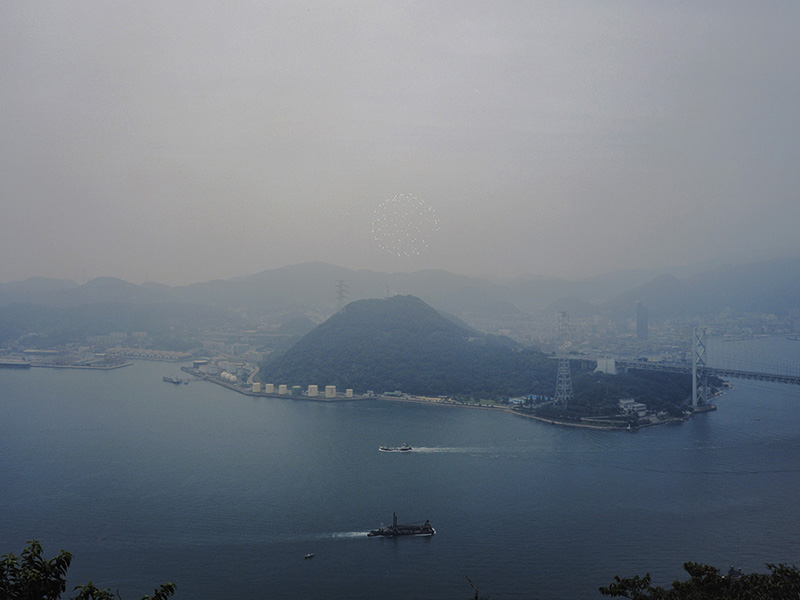
明治時代、関門海峡には、この海の要所を敵の船から 守るべく、見晴らしの良い小高い丘の頂上にたくさんの砲台が作られた。日食になった2009年7月22日、かつて砲台のあった円形の台座から、地元の花火師さんに依頼して花火を打ち上げてもらった。告知で集まった観客たちは、対岸などいろいろな場所から花火を眺めた。
During the Meiji era (1868 – 1912), many batteries were built atop small hills overlooking the Kanmon Straits to protect this strategic point from enemy ships. During the solar eclipse on July 22, 2009, I invited a local pyrotechnician to set off fireworks from the circular pedestal where the gun turret once stood. I announced the event to spectators, who gathered to watch the fireworks from various places, including the other side of the straits.
・・・・・・・・・・・・・・・・・・・・・・・・・・・・・・・・
Re-Fort Project 4
—大人たちのSeven Days War—
2007.8.5-8.13
陸軍富津試験場(千葉県富津市)
メンバー:一ノ瀬彩、土岐文乃、中崎透、濱定史、樋口貴彦など
Re-Fort Project 4
— Our Seven-Day War —
2007.8.5-8.13
Futtsu Testing Ground, Futtsu City, Chiba
Members: Ichinose Aya, Toki Ayano, Nakazaki Toru, Hama Sadashi, Higuchi Takahiro and others
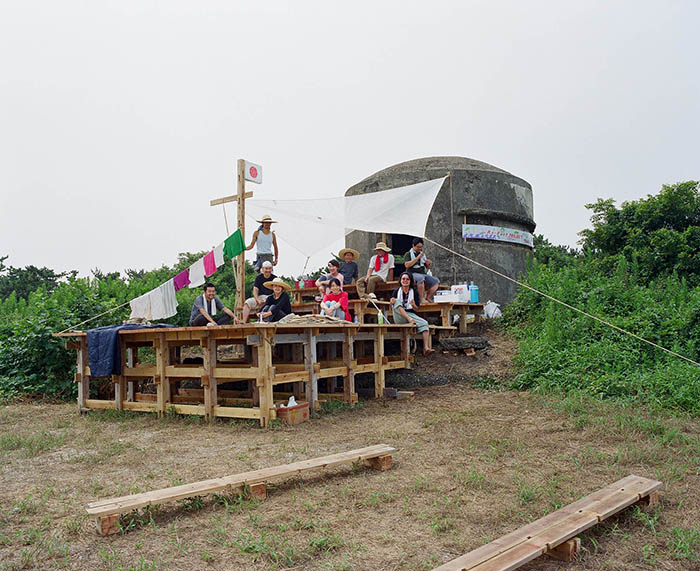
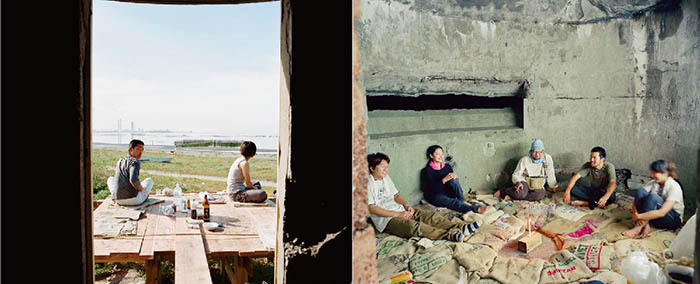
千葉県の海岸に残る、砲台の試験場跡の廃墟。戦時中、ここでは、着弾を観測していた。若き建築家やアーティスト、ミュージシャンとともに、一週間、廃墟をリノベーションしながら中で生活をし、ウッドデッキを製作して、最終日に
音楽イベントを行った。
The ruins of a former testing site for batteries on the coast of Chiba Prefecture, where range testing was conducted during wartime. Together with young architects, artists, and musicians, we lived in the abandoned ruins for a week building an outdoor wooden deck, where we held a music event on the last day of our stay.
・・・・・・・・・・・・・・・・・・・・・・・・・・・・・・・・
Re-Fort Project 3
—東京湾要塞島缶けり大会—
2006.6.18
第二海堡(千葉県富津市)
メンバー:磯部昭子、中崎透など
Re-Fort Project 3
—Kick the Can on Fort Island—
2006.6.18
No.2 Fort, Futtsu City, Chiba
Members: Isobe Akiko, Nakazaki Toru and others
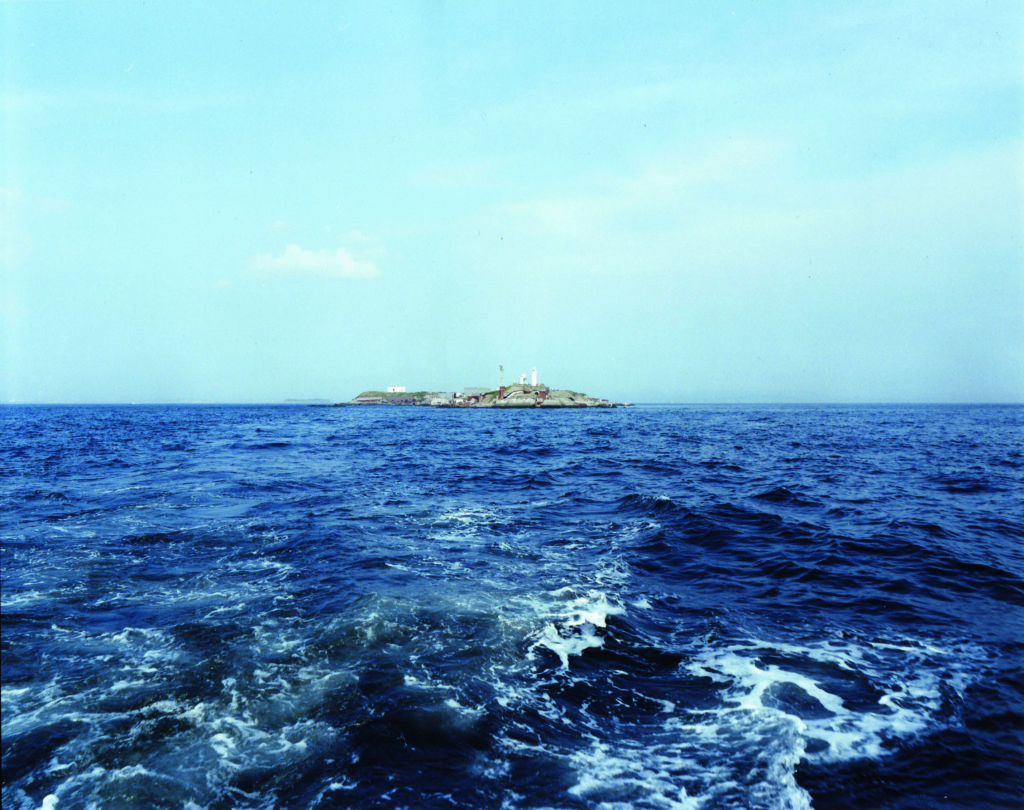
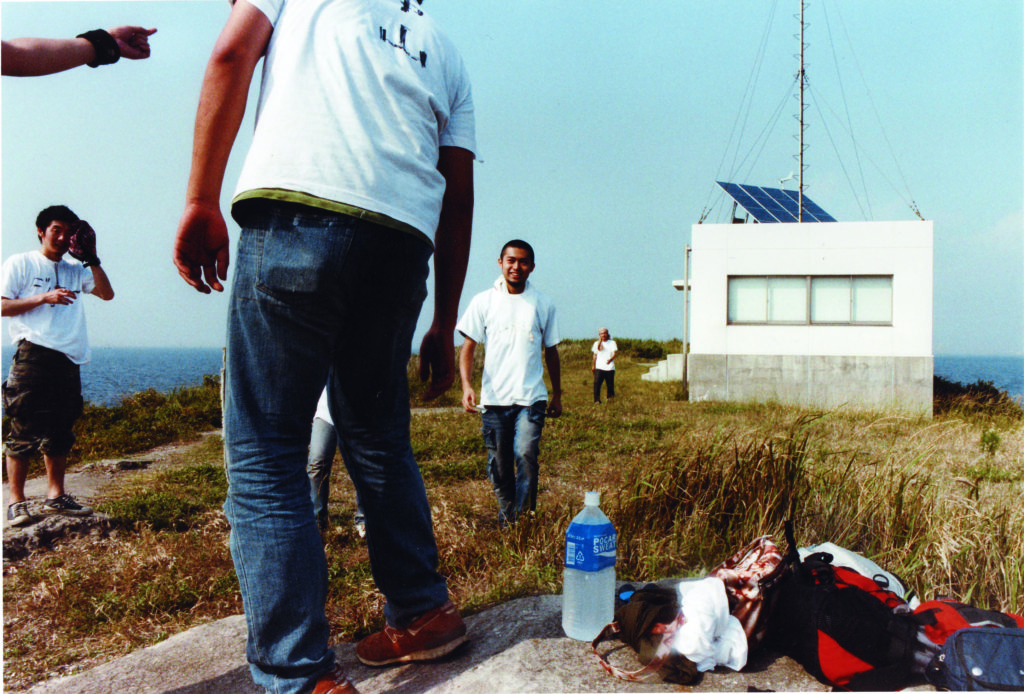
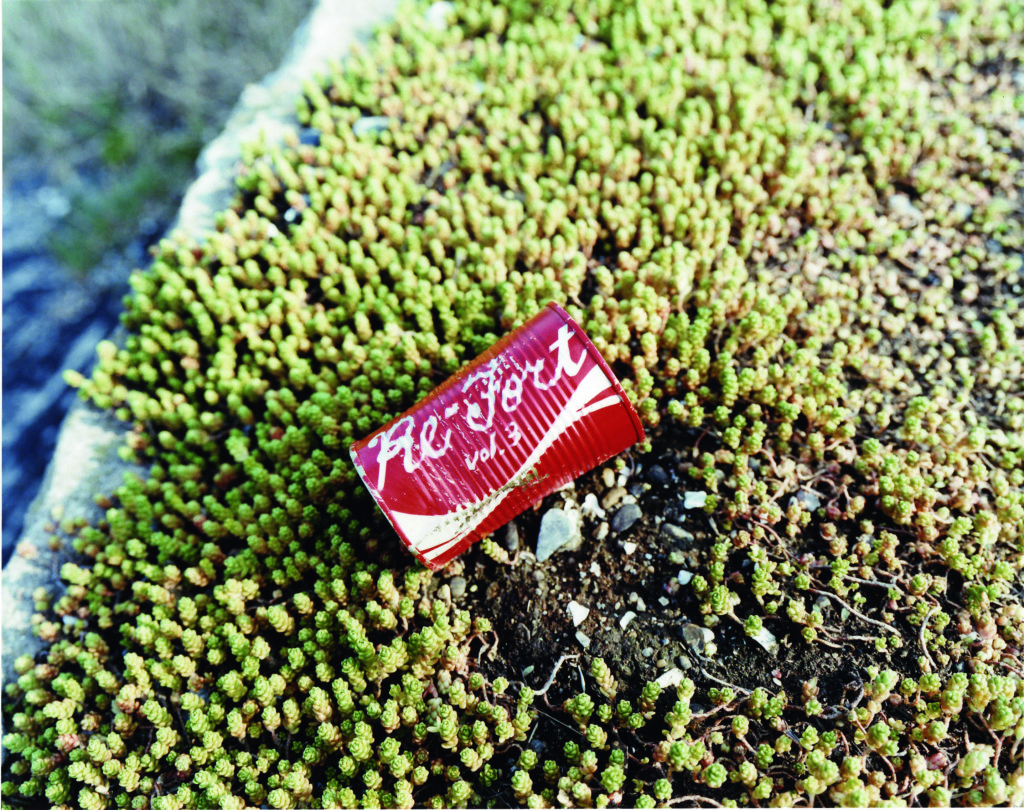
東京湾にうかぶ人工の要塞島の廃墟。ここは釣り人の聖地だった。しかし、地震が起きると沈む心配があったため、立ち入り禁止が決定した。僕らは釣り船に乗り、缶けりをしにこの小さな島へ向かった。
These are the ruins of a human-made fortress island in Tokyo Bay. It used to be a sacred place for fishermen, but the area was abandoned due to concerns that it would sink in the event of an earthquake. We hopped on a fishing boat and headed to this little island to play a game of kick the can.
・・・・・・・・・・・・・・・・・・・・・・・・・・・・・・・・
Re-Fort Project 2
—竹橋フォークジャンボリー2005—
2005.4.11
千鳥ヶ淵高射砲台(東京都千代田区)
メンバー:磯部昭子、テラサカトモヒロ、中崎透など
Re-Fort Project 2
— Takebashi Folk Jamboree 2005 —
2005.4.11
Chidorigafuchi Anti-aircraft Battery, Chiyoda Ward, Tokyo
Members: Isobe Akiko, Terasaka Tomohiro,
Nakazaki Toru and others
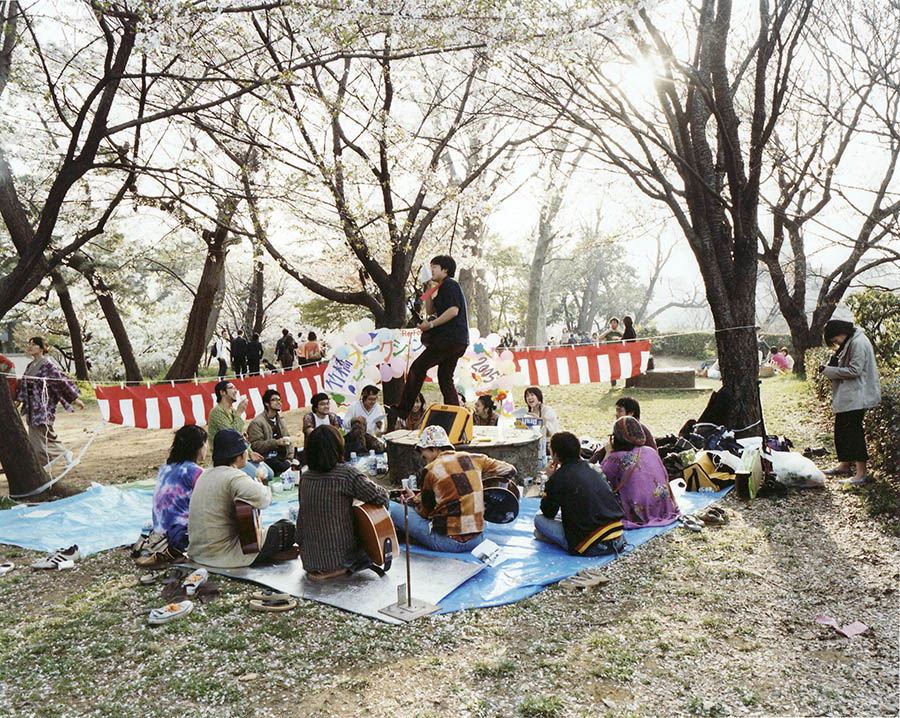
かつて皇居を守るために設置された高射砲台跡で、フォークジャンボリーを開催。花見シーズンの北の丸公園の砲台跡をブルーシートで場所取り(スクワット)して、ヒッピー風仮装で集まった。砲台の台座は歌を歌うステージにした。戦争もフォークも知らない世代として。
We had a folk jamboree on the site of an anti-aircraft battery installed to protect the Imperial Palace.
Dressed in typical hippie attire, we spread out a blue tarp — the Japanese equivalent of a picnic blanket — and squatted in Kitanomaru Park, just north of the Imperial Palace, under the cherry blossoms. We transformed the gun turret’s base into a stage where we sang songs without really knowing the war or the folk music movement that came before us.
・・・・・・・・・・・・・・・・・・・・・・・・・・・・・・・・
Re-Fort Project 1
—戦争廃墟占領パーティー—
2004.8.7
陸軍富津試験場(千葉県富津市)
メンバー:中崎透、テラサカトモヒロ、栗原幸利、安達知亨など
Re-Fort Project 1
— Party in the Ruins of War —
2004.8.7
Futtsu Testing Ground, Futtsu City, Chiba
Members: Nakazaki Toru, Terasaka Tomohiro, Kurihara
Yukitoshi, Adachi Tomoyuki and others
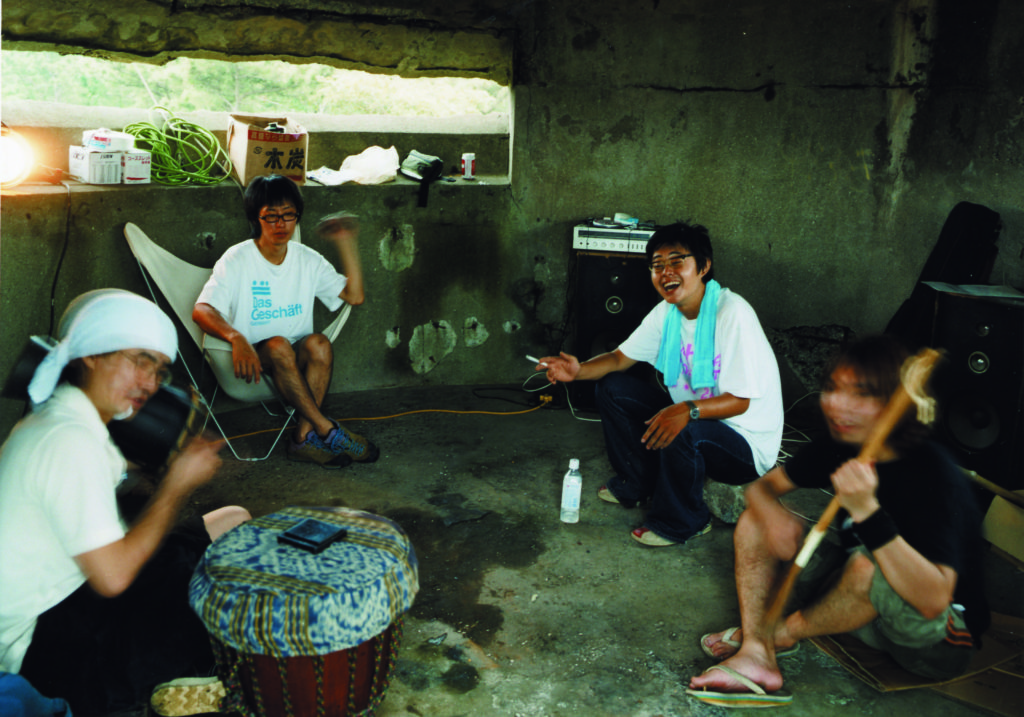
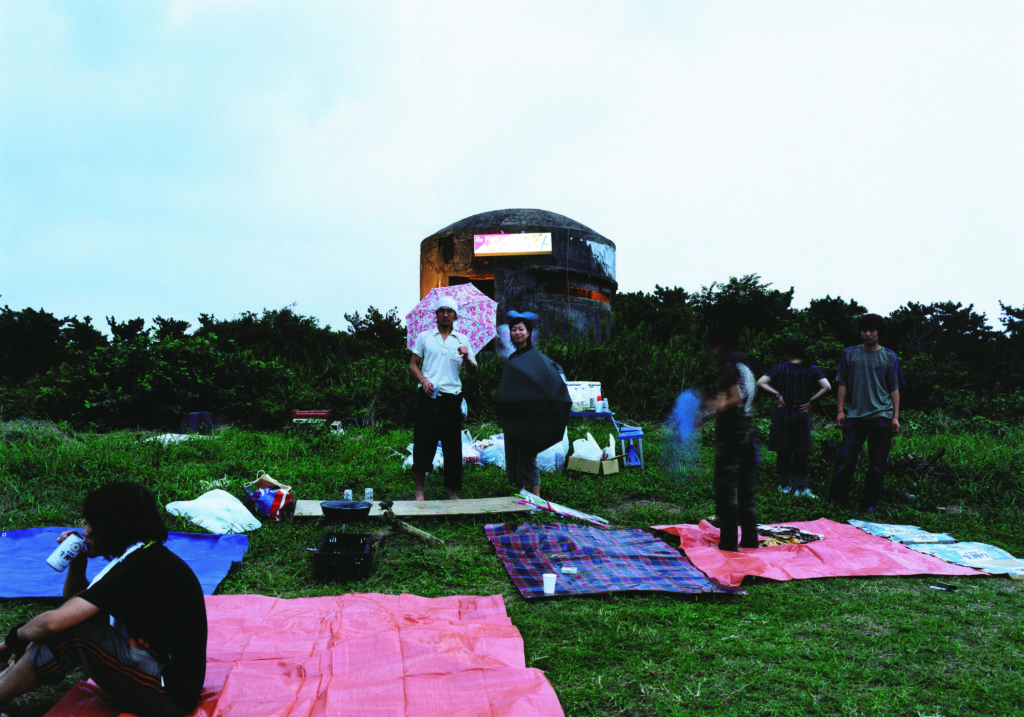
東京湾沿いの千葉県富津市の海岸には、かつて東京で製造された大砲や砲弾を試験する施設の跡が残されて いる。第1回のプロジェクトは、様々な人に招待状を送り、この廃墟を占拠してパーティーを行うことにした。
Located along the coast of Tokyo Bay in Futtsu City, Chiba Prefecture, are the remains of a facility that once tested cannons and shells manufactured in Tokyo. For the first project, I sent out invitations to friends to have a party at this abandoned facility.
・・・・・・・・・・・・・・・・・・・・・・・・・・・・・・・・
・・・・・・・・・・・・・・・・・・・・・・・・・・・・・・・・
exhibition[六本木クロッシング2013]
森美術館 Mori Art Museum
2013
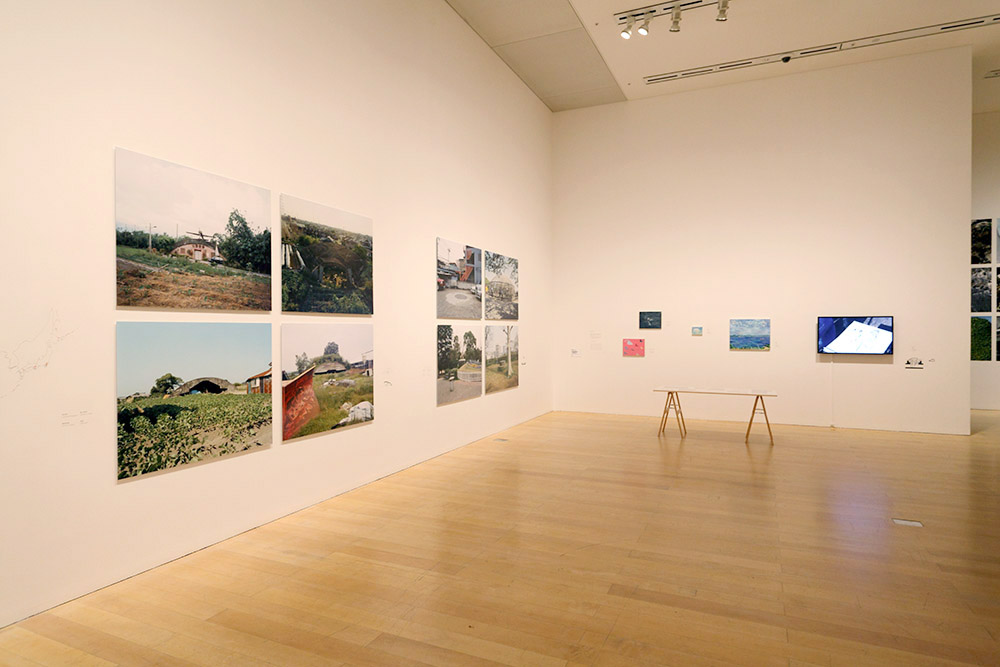
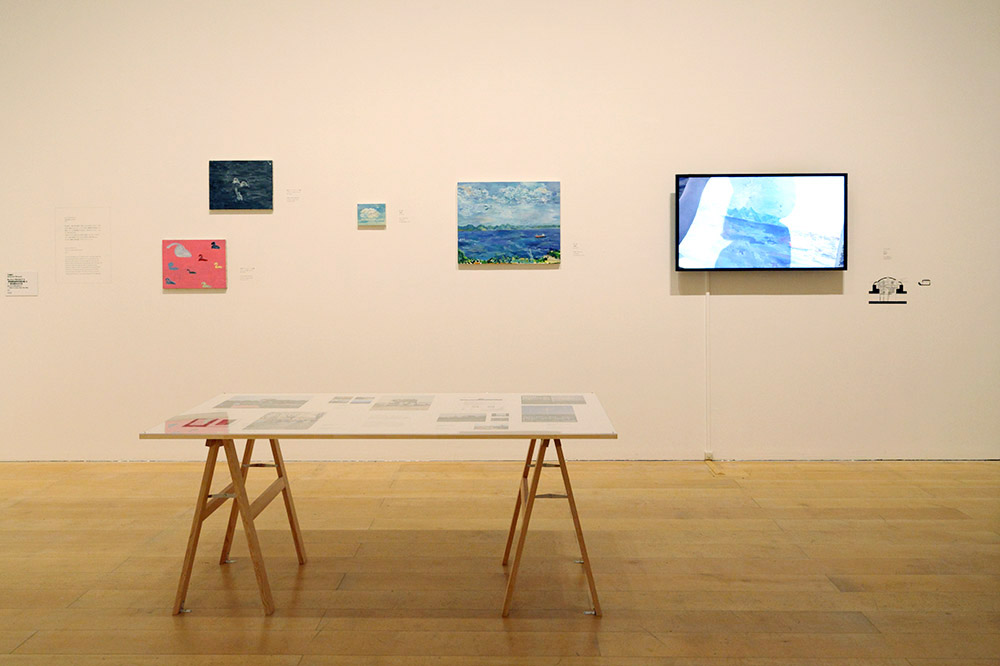
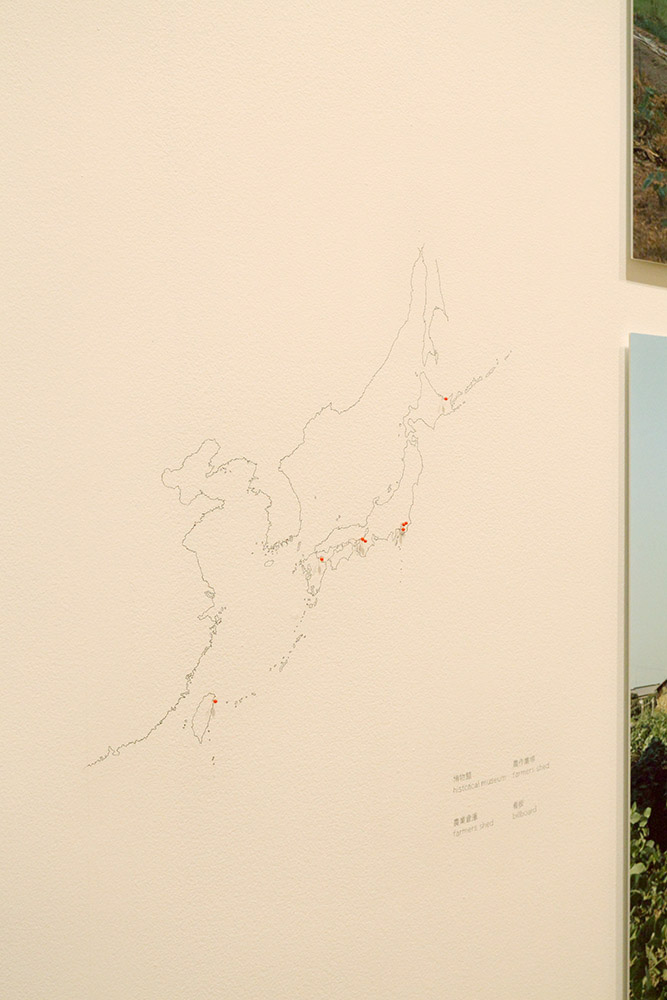
exhibition[Re-Fort Archive]
αM Gallery
2011.Mar
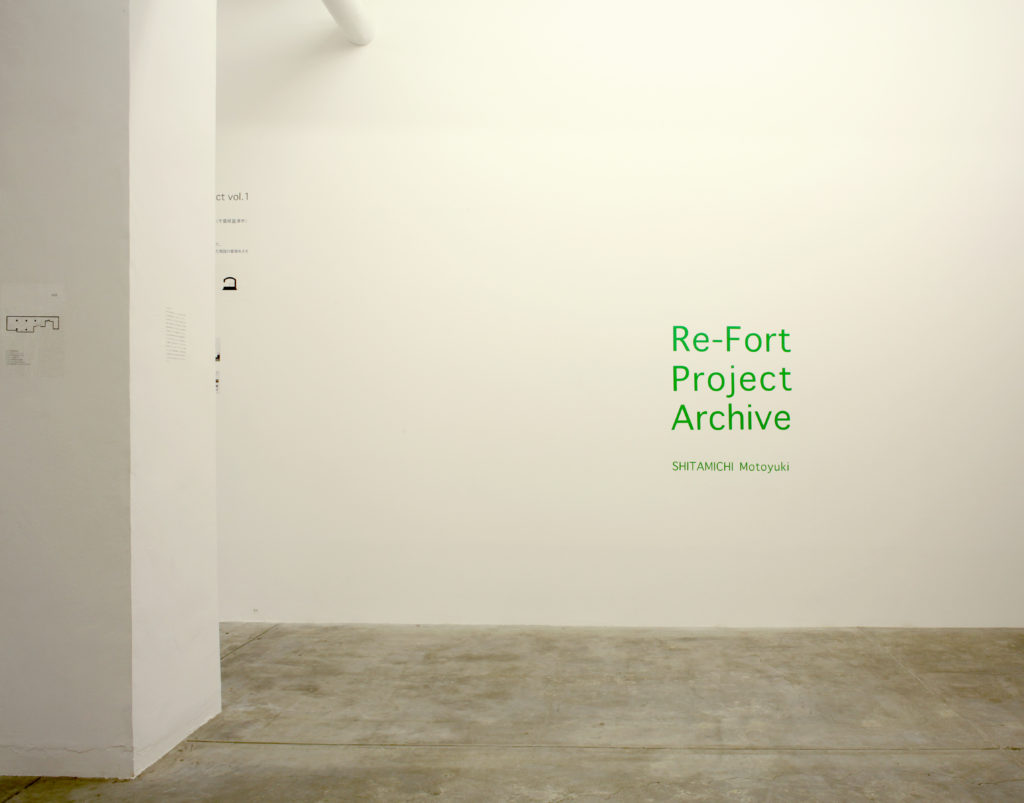
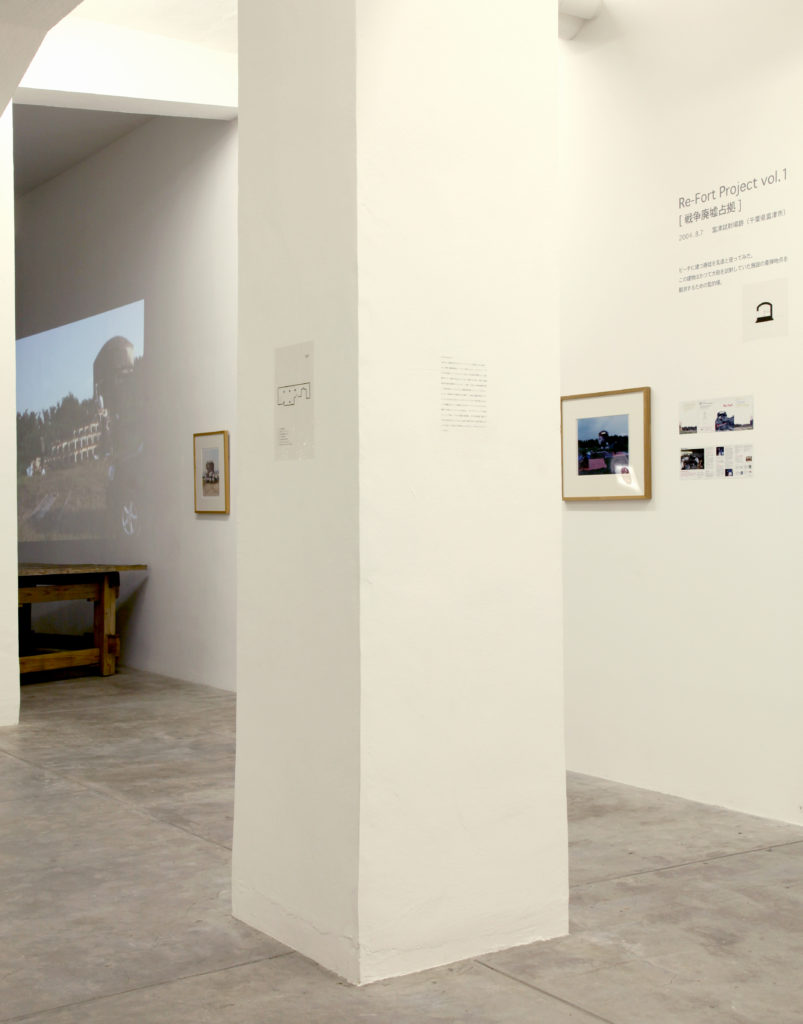
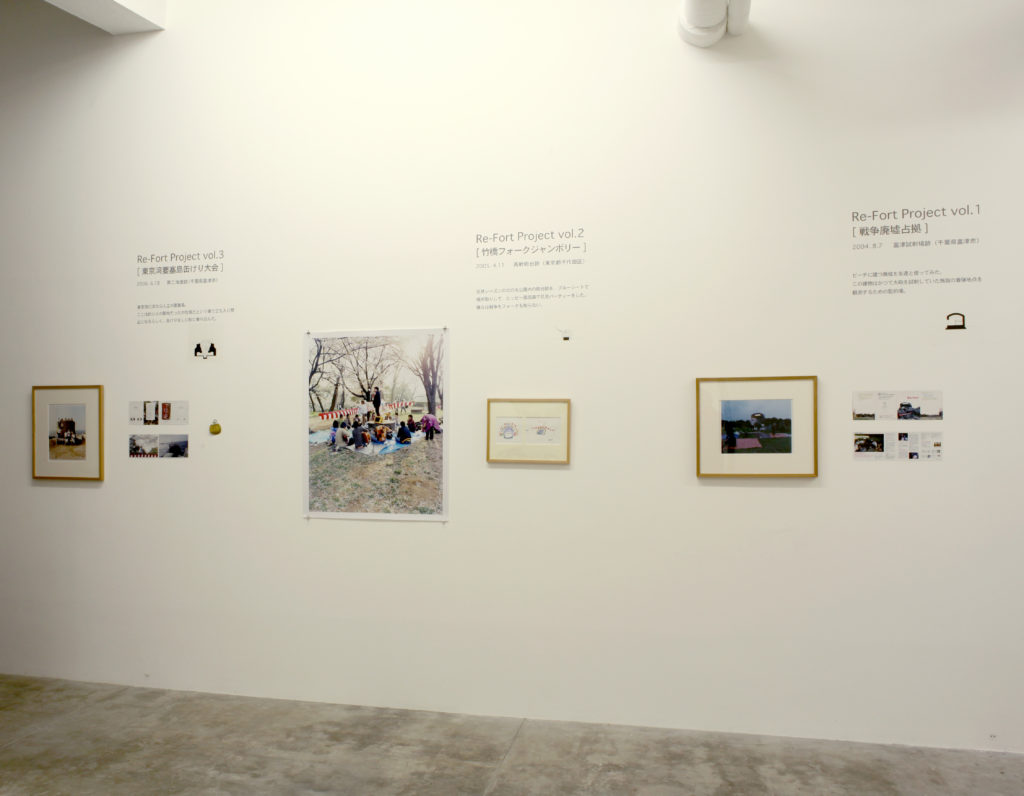
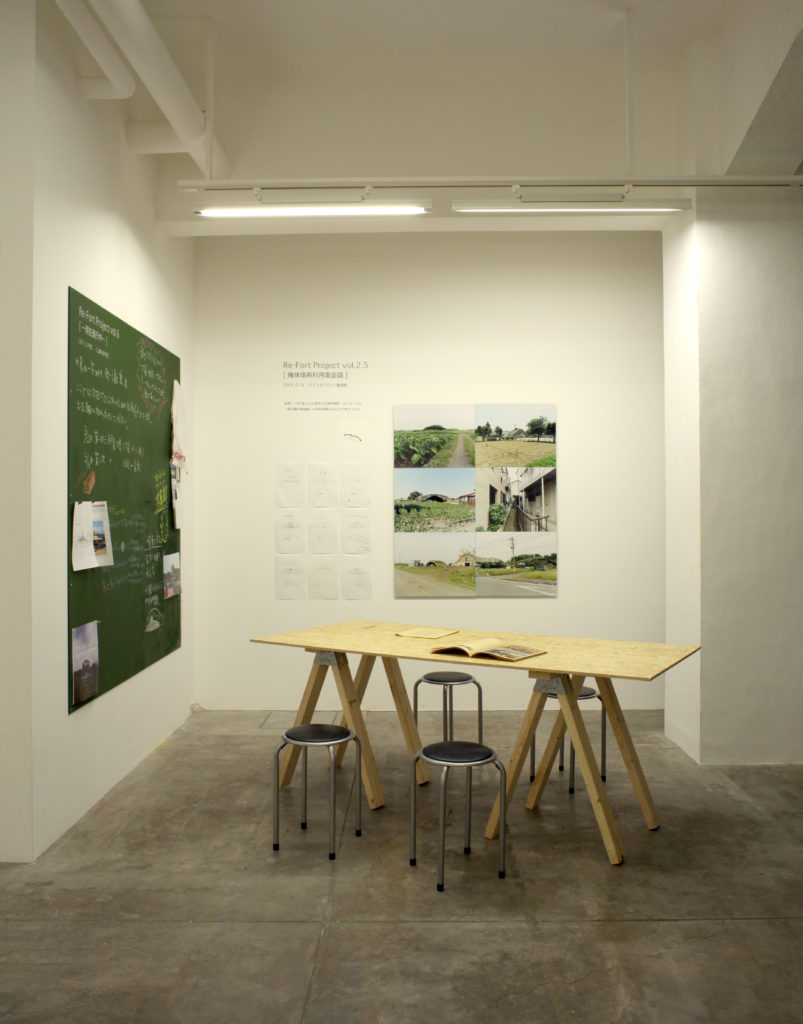

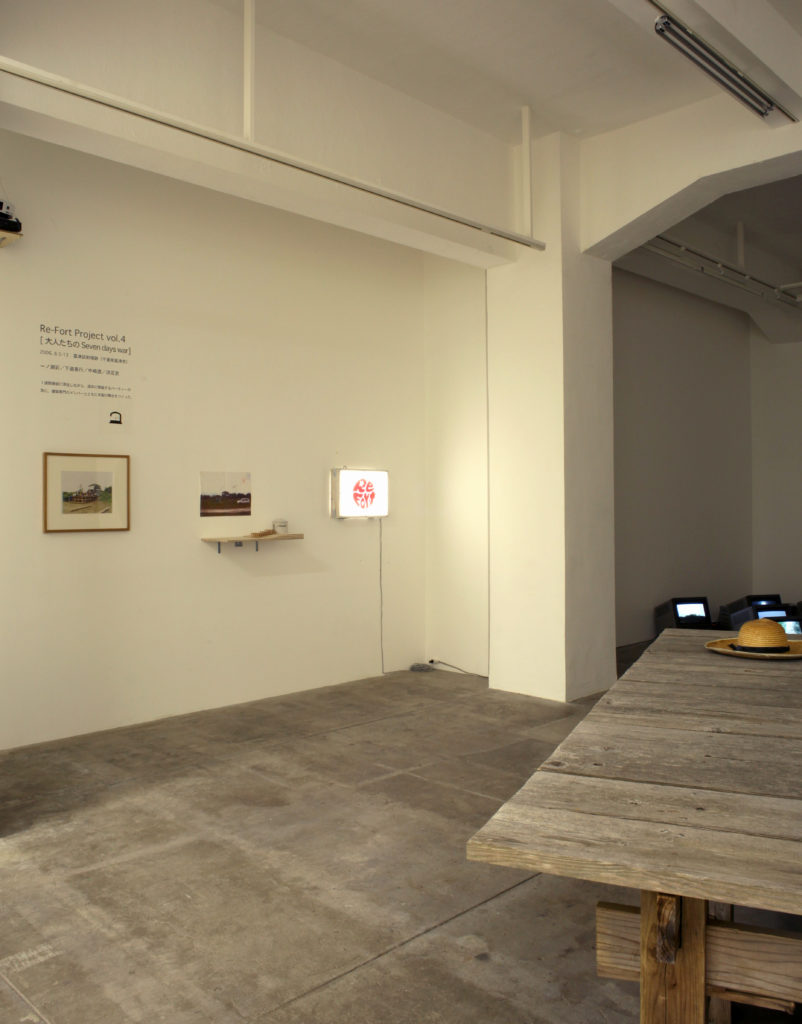
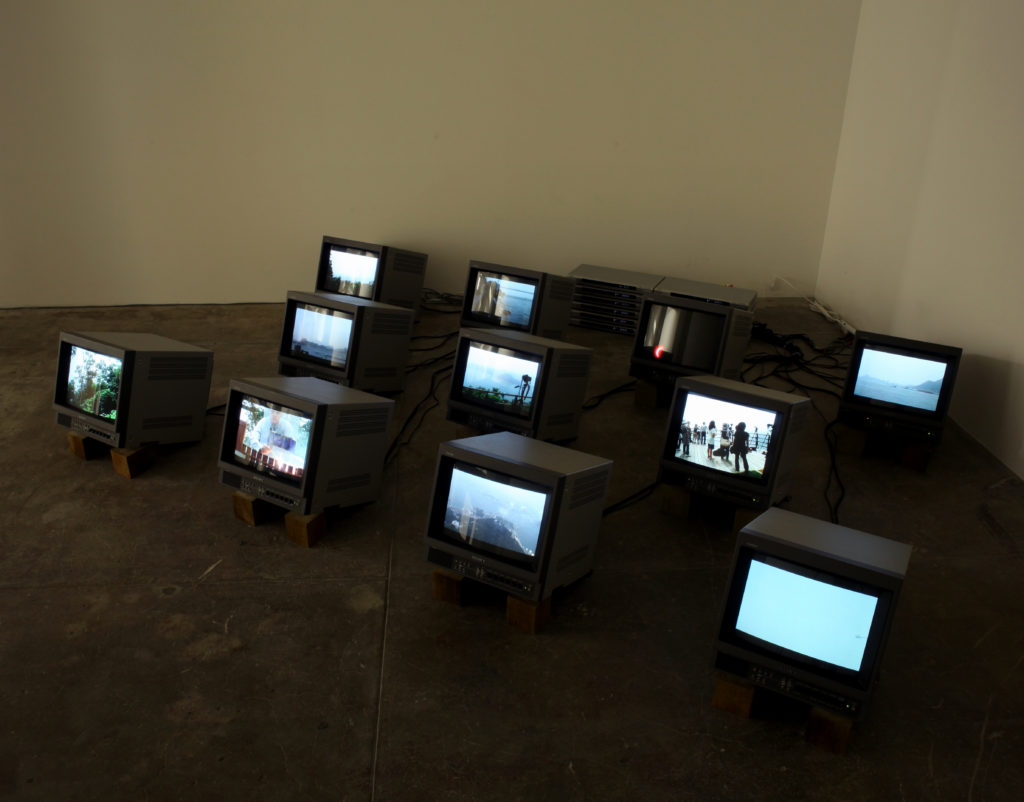
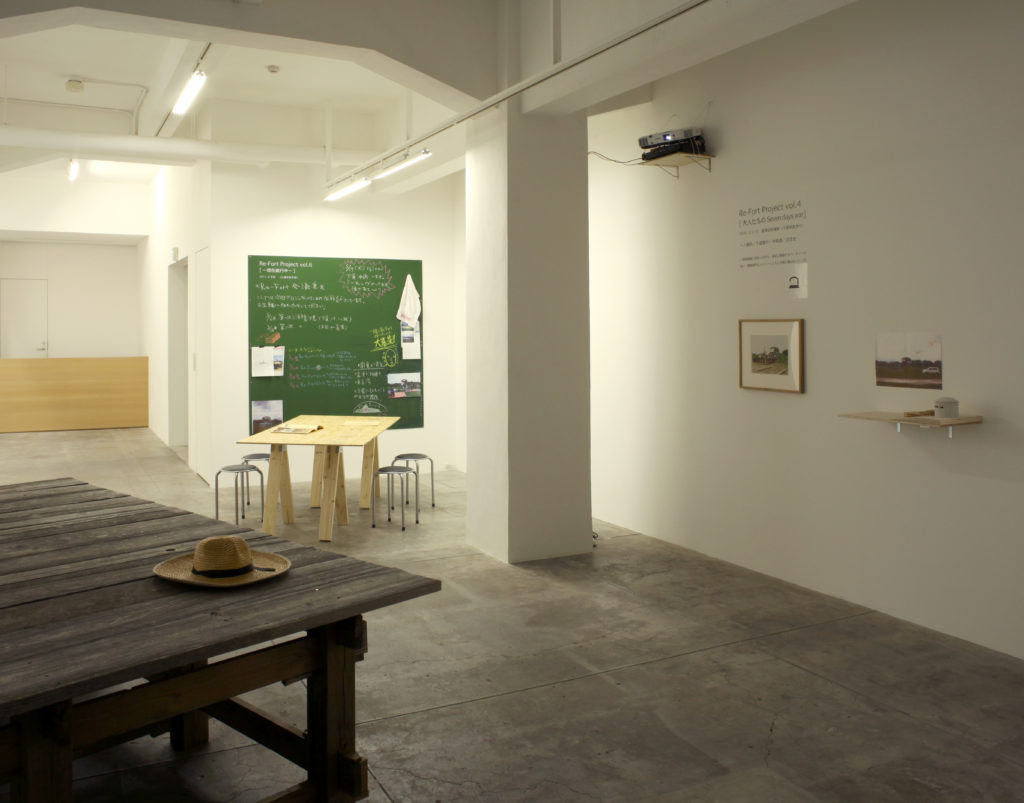
作品タイトル:Re-Fort Project
制作年:2004-
素材:ミクストメディアサイズ:可変
書籍:DVD『Re-Fort Project 5』(Maemachi Art Center, 2011)
展示出品歴:
2015 個展「海を眺める方法」奈義町現代美術館、岡山
2015 個展「海を眺める方法」gallery N、愛知
2013 「六本木クロッシング2013展:アウト・オブ・ダウト
―来たるべき風景のために」森美術館、東京
2011 個展αMプロジェクト2011「『成層圏』vol.3 風景の再起動下道基行」gallery αM、東京
2009 個展「Re-Fort Project vol. 5」Maemachi Art Center、山口
2006 個展「Re-Fort Project」中崎透遊戯室、東京
Title: Re-Fort Project Year: 2004 – Medium: Mixed media Dimensions: Variable Publications: DVD Re-Fort Project 5, Maemachi Art Center, 2011 Exhibitions: 2015 Solo Exhibition “How to look over the sea,” Nagi Museum of Contemporary Art, Okayama 2015 Solo Exhibition “How to look over the sea,” gallery N, Aichi 2013 “Roppongi Crossing 2013: OUT OF DOUBT,” Mori Art Museum, Tokyo 2011 Solo Exhibition αM project 2011 “Stratosphere vol.3 Shitamichi Motoyuki: Reactivating Landscapes,” gallery αM, Tokyo 2009 Solo Exhibition “Re-Fort Project vol. 5,” Maemachi Art Center, Yamaguchi 2006 Solo Exhibition “Re-Fort Project,” NAKAZAKI Tohru PLAYROOM, Tokyo
